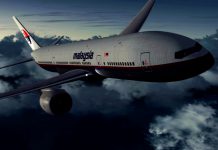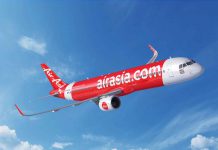The world’s biggest building and home of the iconic Boeing 747, which rolled out 50 years ago this week, could well have ended up in California.
Boeing in the 1960s did not have a factory big enough to house its new jumbo jet so a search began for a suitable site to build what would turn out to be the mother of aircraft plants.
A key factor was an airport with a long runway capable of handling the new plane and three potential sites were evaluated while the 747 was still in the early design phase.
One was Snohomish County Airport, a former military base better known as Paine Field and located 30 miles north of Seattle near what was then the sleepy lumber town of Everett.
A second was past Tacoma, 32 miles southwest of Seattle, at a site adjacent to McChord Air Force base.
READ: Singapore Airlines takes delivery of New York nonstop A350.
The third was at Walnut Creek, California, in the East Bay region of the San Francisco area.
Boeing had recently lost the C-5 program to Lockheed and the thinking was that siting the factory in California could offset the political advantages of competitors.
Supporters of the Walnut Creek site pointed to the fact that Douglas, North American Rockwell, General Dynamics, Northrop, and many other aerospace firms were based in California.
“Some very senior Boeing people were pushing very hard to site our 747 factory there to benefit from that state’s greater political clout in Washington, DC,’’ Boeing engineer Joe Sutter said in his book “747”.

Sutter argued against the California site on logistical and cost grounds when asked his opinion at a committee meeting to discuss the site.
“Given this opening, I told ’em point-blank that I thought it would be an unmitigated disaster,” Sutter wrote. “If 747 production were sent down there, communications would slow, coordination would suffer, costs would rise, our overall logistical challenges would increase, and there was no way in hell that we would meet our schedule commitments to Pan-Am.”

Sutter’s view provoked an angry reaction from the Walnut Creek supporters but to his immense, relief Boeing decided at the start of 1966 to build its new plant at Everett.
It would prove, he recalled, a herculean task which required more soil to be removed from the 700-acre site than was shifted for the Panama Canal and Washington states Grand Coulee Dam combined.
The $US200 million project involved 2500 construction workers toiling in endless rain and mud to erect the 200 million cubic foot (5.66m cubic meter) building.
An engineering feat in its own right, the building’s immense size — it is the world’s biggest in terms volume — made it a landmark and a major tourist attraction for the region.
“So big was it that Boeing workers would sometimes see clouds forming inside it,’’ Sutter said.

The factory would be enlarged to accommodate production of the 767 in 1980 with one extra production hall and was expanded again in 1993 with two additional halls to build the 777.
Today, the world’s biggest building by volume encloses 472 million cubic feet of space over 98.3 acres and you could fit 911 basketball courts inside.
At almost two-thirds of a mile (more than 1km) long and a third of a mile wide, employees often use bicycles to get between jobs.
The massive production facility has six doors, each the size of an American football field and a giant canvas for artwork depicting the company’s planes.

Twenty-six 26 overhead cranes cruise on 72 kilometers of networked tracks and these make 45,000 lifts a month to support the building of approximately 20 planes a month.
Yet the main assembly building is just part of a massive industrial complex that includes three huge paint hangars, sprawling flight lines, a plane delivery center that is as big as an airport terminal, office blocks and a new wing assembly plant.
The Everett campus is the workplace for 30,000 people, produces 25,000 meals a day from 20 cafeterias and its area is bigger than Disneyland — with 12 acres of parking left over.
In many ways, it is indeed a magic kingdom where the world’s largest aerospace company Boeing has produced about 5000 widebody planes – the 747, 767, 777 and 787 since 1968.

It is one of the most popular tourist attractions in Washington State. Boeing started tours of the factory when it was building the first 747 and since then more than 3.5 million people have seen the facility.
The Everett campus is now building the company’s newest plane, the Boeing 777X, a revamp of the widely used 777. A plant to build the 777X’s composite wings increases the factory floor space on the campus a further 25 percent.
Read tomorrow “Safety was a top priority for the father of the 747.”
























